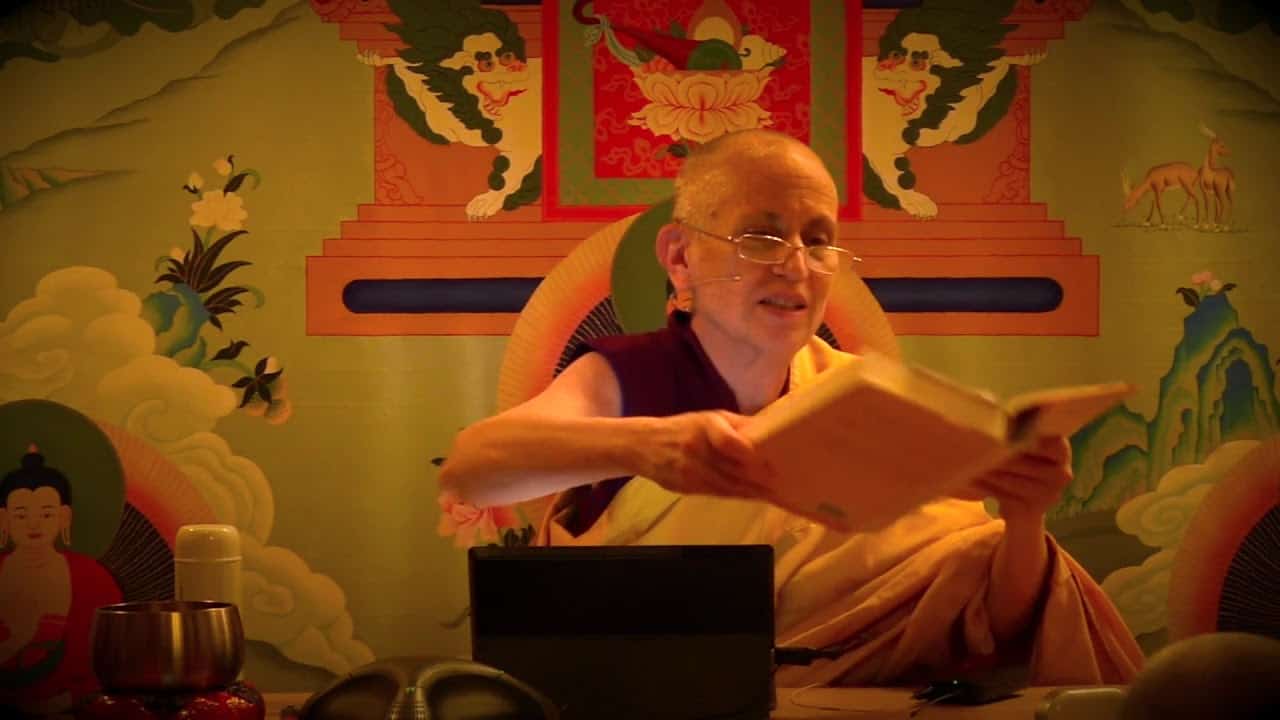Chapter 16: Verses 387-400
Part of a series of teachings on Aryadeva's 400 Stanzas on the Middle Way given on an annual basis by Geshe Yeshe Thabkhe from 2013-2017.
- Showing that all phenomena are free from the extremes of inherent existence and non-existence
- Appropriateness of accepting emptiness of inherent existence
- Difficulty of finding reasons refuting emptiness
- Both emptiness and inherent existence are merely labeled by words
- Refuting that negation of truly existent things makes things non-existent
- Refuting that things are not empty because analogies and reasons to establish emptiness exist
- Explaining the purpose of teaching emptiness
- Showing that conceptions of the two extremes—nihilism and absolutism—are erroneous
- Colophon
- Meditation on impermanence and emptiness as a way of putting teachings into practice
Geshe Yeshe Thabkhe
Geshe Yeshe Thabkhe was born in 1930 in Lhokha, Central Tibet and became a monk at the age of 13. After completing his studies at Drepung Loseling Monastery in 1969, he was awarded Geshe Lharampa, the highest degree in the Geluk School of Tibetan Buddhism. He is an emeritus professor at the Central Institute of Higher Tibetan Studies and an eminent scholar of both Madhyamaka and Indian Buddhist studies. His works include Hindi translations of The Essence of Good Explanation of Definitive and Interpretable Meanings by Lama Tsongkhapa and Kamalasila's commentary on the Rice Seedling Sutra. His own commentary, The Rice Seedling Sutra: Buddha’s Teachings on Dependent Arising, was translated into English by Joshua and Diana Cutler and published by Wisdom Publications. Geshela has facilitated many research works, such as a complete translation of Tsongkhapa’s The Great Treatise on the Stages of the Path to Enlightenment, a major project undertaken by the Tibetan Buddhist Learning Center in New Jersey where he teaches regularly.


